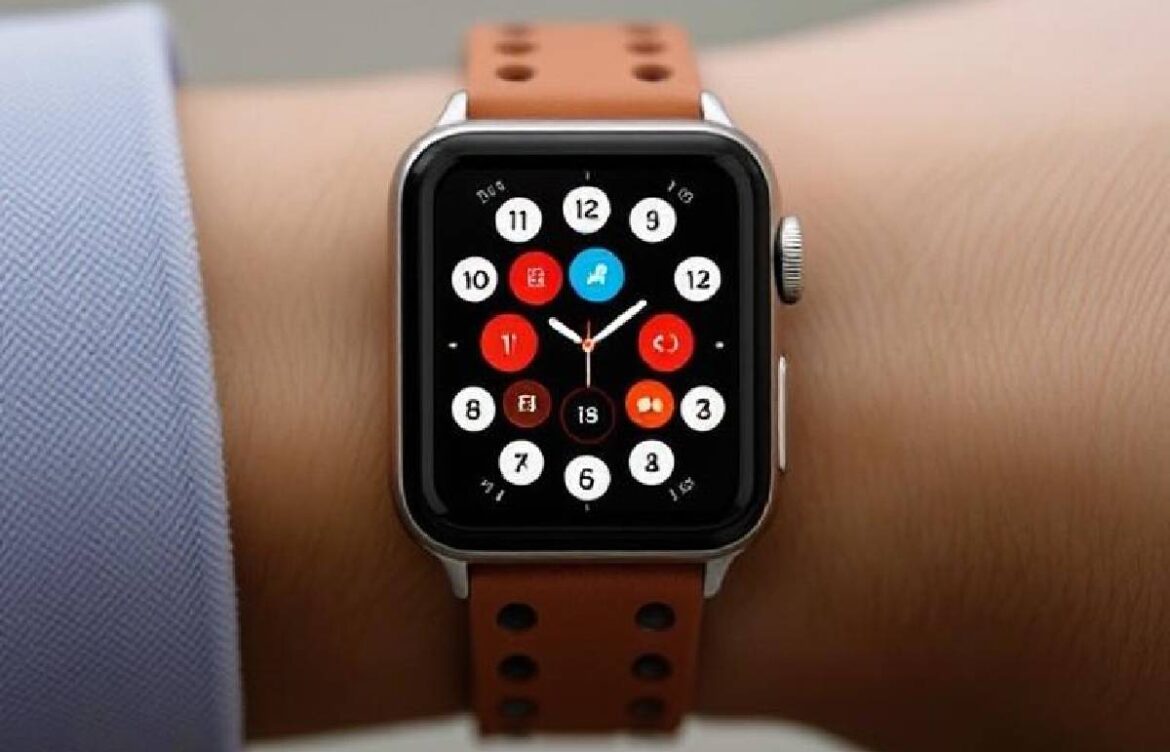
What is an Apple Watch?
Apple Watch – Users of Apple Watch can achieve multiple tasks through their wearable device, enabling them to call phones and send text messages while reading their email messages. The launch of the first Apple Watch by Apple took residence on April 24, 2015.
The watch was Apple’s first design, which aimed to let users do without telephones and shorten the time spent watching phone displays. The Apple Watch gained popularity because users appreciated its fitness tracking features, health monitoring capabilities, and connectivity with Internet of Things devices.
Following its initial launch, the Apple Watch introduced multiple enhanced capabilities, including water-resistant, blood oxygen and electrocardiogram (ECG) reading technology and emergency SOS features that monitor accidents and contact emergency medical services. Users can synchronize Apple Watches through their iPhone devices, Mac computers, and AirPods. Counterpoint reports that Apple Watches became responsible for 19% of smartwatch deliveries during the second quarter of 2024.
Apple Watch offers customers 42 mm and 46 mm case dimensions for its basic version. An always-on Retina LTPO (low-temperature polycrystalline oxide) organic LED (light-emitting diode) display features in the Apple Watch and an ambient light sensor for glare reduction. The device delivers an 18-hour regular power duration but extends to 36 hours using low-power mode that turns off all content except the screen clock. The watch face of this device accepts a magnetic charger that operates through a USB connection that can charge any iPhone model. Customers can select between aluminum, stainless steel, and titanium cases when purchasing the device.
Smartwatch

People attach a portable smartphone accessory called the smartwaa to their wrists for daily use. Users can obtain smartphone alerts and messages alongside application alerts through the fundamental connection of most smartwatches with smartphones. Users can make phone also calls using particular smartwatches. Smartwatches display color screens, but basic models transmit messages through black-and-white e-paper. The smartwatch operates using touchscreen input and physical buttons, or their conjunction combinations include built-in pedometers and heart-rate monitors, which enable users to monitor their health Condition.
The continuous reduction of computer technology during the 20th century made it possible to place electronic components into watch sizes. The Calcron (1975) entered the market as the initial calculator watch device featuring a nine-digit display screen. During the early 1980s, Seiko launched various timepieces that featured computational functions. Users could access data storage on the Data-2000 (1983) through its 1,000-character capacity because it functioned as the Data-2000 name implied. Users could link the RC-1000 (1984) with a personal computer for operation. The MessageWatch from Receptor (1990) accepted pager communications through FM radio.
During the 1990s, the connection between watches and computers became closer. Datalink (1994) users collaborated with Timex and Microsoft to transfer phone numbers from their computers to the watch using wireless light pulses. Seiko achieved integration between computers and watches with its Ruputer product of 1998. Data entry was possible through buttons and joystick controls, and users had software authoring capabilities. The SPH-WP10 watch phone from Samsung marked history as the initial phone-watch combination when it launched in 1999. Its calling duration was 90 minutes.
Conclusion
The first recognized Microsoft smartwatch, SPOT (Smart Personal Object Technology), entered the market in 2004. The SPOT retrieved weather reports, news updates, and stock data through an FM radio network. Users could get email and instant messages via the Microsoft SPOT system, but they could not send any responses. When smartphones entered the market, manufacturers introduced smartwatches, including Sony Ericsson LiveView in 2010, Pebble in 2013, and Apple Watch in 2015, drawing information from smartphones. Google launched Android Wear in 2014 as a specific version of Android that targets wearable devices, especially smartwatches.
